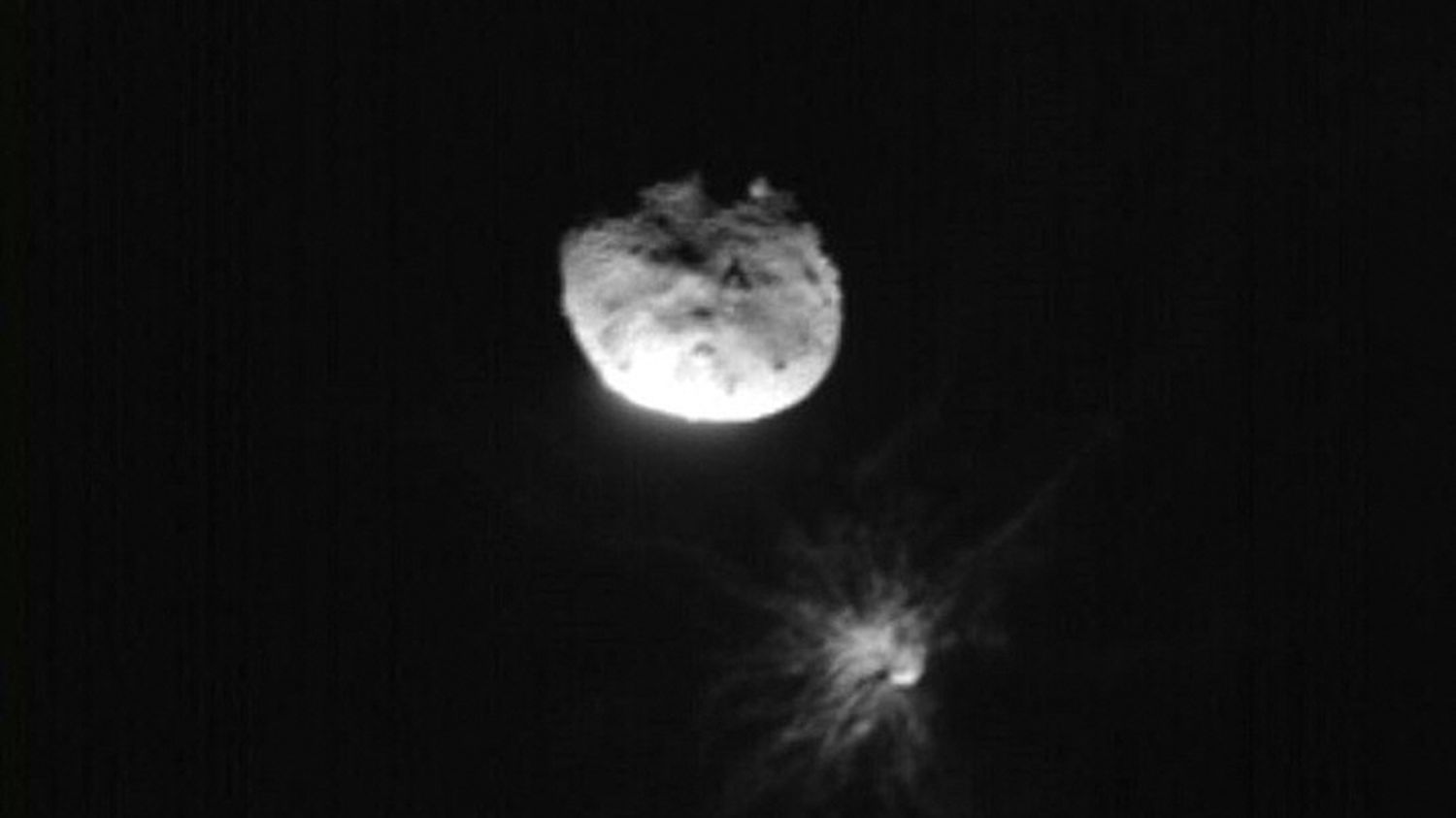Last September, a spacecraft deliberately crashed into an asteroid 11 million kilometers from Earth. The goal: to simulate the deviation of an asteroid threatening our planet. After several months of calculations and observations, astronomers have just published the first results of this mission.
Article written by
Published
Reading time : 1 min.
We knew that the mission dubbed Dart – like a dart in English – had been a success. But astronomers had not yet revealed the results of their observations. It is now done in the magazine Nature and Patrick Michel, one of the French scientists of this program, repeats it: the mission is successful.
>> Dart mission: a NASA spacecraft hit an asteroid to deflect its trajectory, a historic first
As we recall, the spacecraft struck a sort of large pebble 150 meters in diameter at nearly 22,000 km/h. Its name: Dimorphos, orbiting a larger asteroid called Dydymos. The impact of the spaceship therefore made it possible to modify the trajectory of Dimorphos, to modify its orbit.
A flattened rugby ball
Astronomers were thus able to estimate the momentum transmitted to the asteroid, which does not look like a rugby ball as scientists initially thought, but rather a flattened rugby ball.
On the other hand, it is difficult to assess its composition. If the astronomers were able to observe it closely thanks to the camera installed on the ship, it seems that Dimorphos is an aggregate of rocks, dust, not a monolithic block, but this remains to be confirmed.
To help scientists find out if Dimorphos has been deformed following the impact, they can count on the help of amateur astronomers. This is also one of the particularities of this program. About thirty “citizen astronomers”, as they are called, co-signed one of the articles published by the professionals. Among these amateurs four French people living in Reunion or Normandy, who observed the event with their own telescopes, from their garden.
As for the professionals, they notably used the famous Hubble and James Webb space telescopes. But the work is not finished as another space probe is to be launched next year to join Dimorphos and Dydimos. It will make it possible to observe in detail the consequences of the collision.
